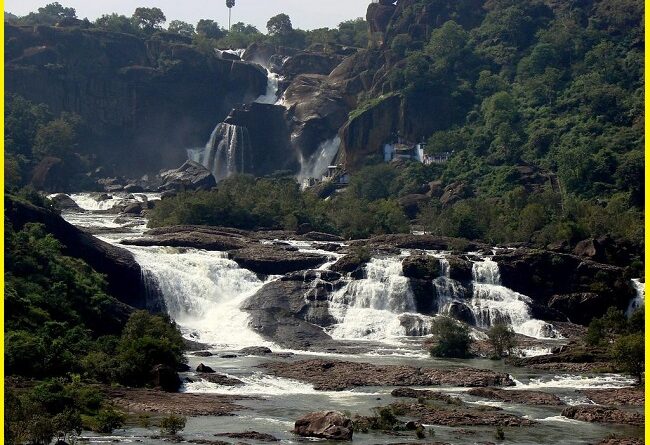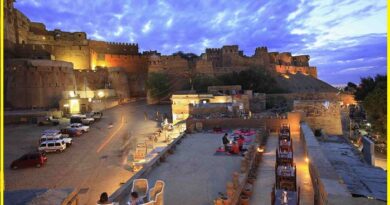In the Heart of Tamil Nadu- Tirunelveli’s Timeless Charms
Tirunelveli
Tirunelveli is a city located in the southern part of the Indian state of Tamil Nadu. It is the administrative headquarters of the Tirunelveli District. The city is known for its rich cultural heritage, historical significance, and agricultural contributions. The Thamirabarani River is the major source of irrigation and is fed by the northeast and southwest monsoons. There are several small lakes or ponds in the city. These include Nainar Kulam, Veinthan Kulam, Elantha Kulam, and Udayarpetti Kulam. The Tirunelveli itself is situated on the banks of the Thamirabarani River and has a diverse geographical landscape that includes plains, hills, and rivers.
The history of city dates back to ancient times, with references in literary works like the Sangam literature. It has a long and storied history, with influences from various dynasties such as the Cholas, Pandyas, and Nayaks. The city has a rich cultural heritage, with numerous temples, churches, and mosques. The Nellaiappar Temple and the Kanthimathi-Nellaiyapper Temple are prominent Hindu temples in the region.
Tirunelveli weather
In Tirunelveli, the wet season is overcast, the dry season is partly cloudy, and it is hot and oppressive year-round. Over the year, the temperature typically varies from 70°F to 96°F and is rarely below 66°F or above 101°F. The hot season lasts for 1.8 months, from March 16 to May 9, with an average daily high temperature above 94°F. The hottest month in Tirunelveli is April, with an average high of 95°F and a low of 77°F.
The cool season lasts for 3.3 months, from October 22 to January 30, with an average daily high temperature below 89°F. The coldest month of the year in Tirunelveli is January, with an average low of 70°F and a high of 88°F. Tirunelveli experiences extreme seasonal variation in monthly rainfall. Rain falls throughout the year in Tirunelveli. The month with the most rain in Tirunelveli is October, with an average rainfall of 8.4 inches. The month with the least rain in Tirunelveli is January, with an average rainfall of 0.6 inches.
Tirunelveli Temple
One of the prominent temples in Tirunelveli is the Nellaiappar Temple, also known as the Arulmigu Swami Nellaiappar and Kanthimathi Amman Temple. The main deities of the Nellaiappar Temple are Lord Shiva, known as Nellaiappar, and his consort Parvathi, who is worshipped as Kanthimathi Amman. The temple is dedicated to the divine couple. The Nellaiappar Temple is located in the heart of Tirunelveli, near the river Thamirabarani. It is a significant religious and cultural landmark in the city.

The temple showcases impressive Dravidian architecture. The complex has towering gopurams (entrance towers), pillared halls, and intricate sculptures. The temple’s architecture reflects the artistic and architectural styles prevalent in the region. The history of the Nellaiappar Temple dates back several centuries, with contributions from various rulers and dynasties. The temple has undergone renovations and expansions over time.
Best time to visit Tirunelveli
The best time of year to visit Tirunelveli for general outdoor tourist activities is from mid-December to late February, with a peak score in the third week of January.
Also Read- Tharangambadi-A Dreamy Beach Town near Pumpuhar, Tamilnadu
Tirunelveli Tourist Places
The term “Kurinji” is associated with a specific kind of flora found in the Western Ghats, a mountain range along the western coast of India. “Kurinji” refers to a flowering plant species known scientifically as Neelakurinji. This plant is notable for its unique blooming cycle, where it flowers gregariously once every 12 years.
Neelakurinji is famous for its mass flowering, which occurs once in 12 years. During this period, the hillsides are covered with a vibrant carpet of purple-blue flowers, creating a spectacular natural phenomenon. Neelakurinji is found in the shola-grassland ecosystem of the Western Ghats, particularly in regions with altitudes ranging from 1300 to 2400 meters.
The Western Ghats, also known as the Sahyadri range, is a UNESCO World Heritage Site and one of the eight “hottest hotspots” of biological diversity in the world. It spans several states in India, including Maharashtra, Goa, Karnataka, Kerala, and Tamil Nadu. The blooming of Neelakurinji attracts tourists and nature enthusiasts, drawing attention to the rich biodiversity of the Western Ghats.
Chennai to Tirunelveli train
Several trains operate between Chennai and Tirunelveli. However, keep in mind that train schedules can change, and it’s always a good idea to check the latest information before planning your journey. Trains like Nellai Express, Pearl City Express, Anantapuri Express, and others operate on the Chennai-Tirunelveli route. The availability of specific trains may vary, and new services might be introduced.
Train Stations
Departure Station (Chennai): Chennai Central or Chennai Egmore
Arrival Station (Tirunelveli): Tirunelveli Junction

Coimbatore to Tirunelveli train
Several trains operate between Coimbatore and Tirunelveli. However, please note that train schedules can change, and it’s advisable to check the latest information before planning your journey. Trains like Nagercoil Express, Tirunelveli Express, and others operate on the Coimbatore-Tirunelveli route. The availability of specific trains may vary, and new services might be introduced.
Train Stations
Departure Station (Coimbatore): Coimbatore Junction
Arrival Station (Tirunelveli): Tirunelveli Junction




